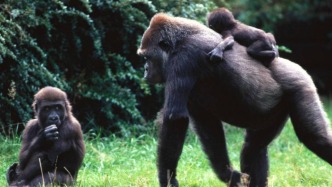
After more than 20 years of hard work, researchers have successfully sequenced the entire genome of six existing apes, providing a close perspective for the study of human evolution. This was called "a milestone in genetics" by the British magazine Nature.
A team of 123 researchers from various countries and regions published the research results in Nature on the 9th, which is expected to help protect apes and enhance scientists' understanding of human evolution.
The genome represents the sum of all the genetic material of an organism, including DNA (deoxyribonucleic acid). DNA is like a book with many "instructions" that tell the cell how to operate. Genome sequencing aims to figure out what the "letters" (the building blocks of DNA) in the book are and in what order they are arranged to understand the contents and functions of the genome.
Since the successful sequencing of the human genome in 2001, the scientific community has been committed to uncovering the mysteries of human evolution by studying the genomes of apes, which are most similar to the human genome.
In the latest study, researchers used advanced sequencing technology and algorithms to read longer DNA fragments and assemble them into a sequence that extends from one end of each chromosome to the other without any gaps.
Using these techniques, researchers decoded the genomes of chimpanzees, bonobos, gorillas, Bornean orangutans, Sumatran orangutans, and siamangs, discovering between 770 and 1,482 possible new genes for each species. They also discovered rare DNA structures lurking in previously unsequenced regions of the genome.
The researchers said that understanding these genomes will help geneticists gain insights into human evolution, among other things. In the medical field, for example, scientists often study variations in ape DNA that make them resistant to certain diseases, such as AIDS. The results are also important for analyzing the genetic diversity of endangered ape populations. All six sequenced species are listed as endangered or critically endangered.